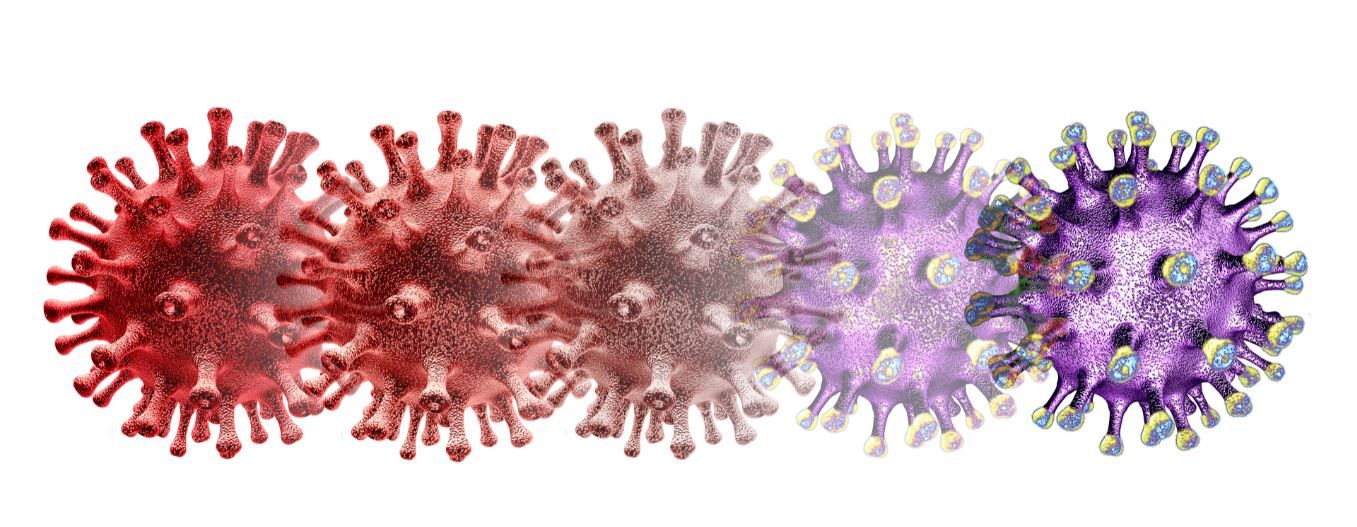- Clinical Technology
- Adult Immunization
- Hepatology
- Pediatric Immunization
- Screening
- Psychiatry
- Allergy
- Women's Health
- Cardiology
- Pediatrics
- Dermatology
- Endocrinology
- Pain Management
- Gastroenterology
- Infectious Disease
- Obesity Medicine
- Rheumatology
- Nephrology
- Neurology
- Pulmonology
COVID-19 Variant Primer: What we Know So Far
Infectious disease expert Rodger MacArthur, MD, explains what we know so far about the COVID-19 variants and some of the challenges to come.
©freshidea/stock.adobe.com

The Givens:
- All viruses mutate.
- RNA viruses, like HIV and SARS-CoV-2, mutate quite quickly.
- SARS-CoV-2 mutates from the moment it enters the host.
- If the virus is replicating, it is mutating.
- The only way to prevent the virus from mutating is by completely shutting down viral replication.
Good news: Many of these mutations are “dead end” mutations, which are not compatible with viral existence.
Not good news: Other mutations can allow a virus to survive against antivirals or various host defenses.
Mutations can have multiple effects. For instance, a mutation, or a series of mutations, can allow a virus to survive longer but may also cause the virus to be less virulent. Some mutations result in a less “fit” virus (ie, lower replicative capacity); other mutations result in a more fit virus. Think Darwinian principles: survival of the fittest occurring over an exceptionally short period of time.
Currently, there are 3 reasonably well-described SARS-CoV-2 variants: B.1.1.7 (UK); B.1.351 (South Africa); P.1 (Brazil). All 3 were detected in the US by January of this year.All3 variants have at least 2 mutations in common:
- D614G (a glycine for aspartate substitution at position 614 in the receptor binding domain of the spike protein)
- N501Y (a tyrosine for asparagine substitution at position 501 in the receptor binding domain of the spike protein).
These mutations result in a 3-dimensional change to the spike protein, potentially allowing for better or more efficient binding to the ACE-2 receptors in the nasopharynx and lungs. Another mutation in the South African variant, E484K (a lysine for glutamate substitution at position 484 in the receptor binding domain of the spike protein) appears to be associated with reduced neutralizing antibody activity.
D614G research proves pivotal
Most of what we know about these variants is a result of research on the D614G mutation. This information was nicely summarized in a recent article in the New England Journal of Medicine by Dr. Ralph S. Baric. He described an elegant experiment in golden Syrian hamsters by Plante and colleagues, in which it was demonstrated that the mutated G614 variant replicated more efficiently than the D614 variant, even at D614-to-G614 infection ratios as high as 9:1. In other words, the G614 appeared to be fitter (higher replicative capacity) than the D614 variant. But there is some good news: 1) The G614 variant did not result in more severe disease than the D614 variant; and 2) the G614 variant appears to be just as susceptible to neutralization by antibodies from serum of individuals obtained after vaccination against the D614 variant.
Furthermore, preliminary data appear to show very good levels of protection against all of these emerging variants from the 3 currently available vaccines.
We still do not know how widespread these variants are in the US and elsewhere, because not enough virus samples are being sequenced. However, the CDC and several commercial laboratories now have the capability to sequence thousands of samples per week. The current PCR nasopharyngeal assays used to detect SARS-CoV-2 will detect the variants, but a positive result caused by infection with a variant will look identical to a positive result from the originally circulating viral quasispecies. Only sequencing will determine which variant has infected us.
Without question, we are in a race against the virus that we must win. As of March 4, 2021, over 54 million persons in the US have received at least one dose of a COVID-19 vaccine, and over 27 million have received both doses of either the Pfizer or Moderna vaccine. If we can get another 200 million persons vaccinated by the end of June and continue to wear masks through the summer and beyond, we have a very good chance of winning the race.
We're all in this together.
References
- Baric RS. Emergence of a Highly Fit SARS-CoV-2 Variant. N Engl J Med 2020; 383:2684-2686.
- Plante JA, Liu Y, Liu J, et al. Spike mutation D614G alters SARS-CoV-2 fitness. Nature 2020 October 26 (Epub ahead of print).
For more COVID-19 coverage for primary care, visit our COVID-19 Resource Page.
No Rx Required for COVID-19 Vaccination But ACIP Calls for Better Informed Consent Process
September 22nd 2025The ACIP on September 19 narrowly voted against requiring a prescription to get the shot but urged more detailed discussion of vaccine risks during shared decision making conversations.
